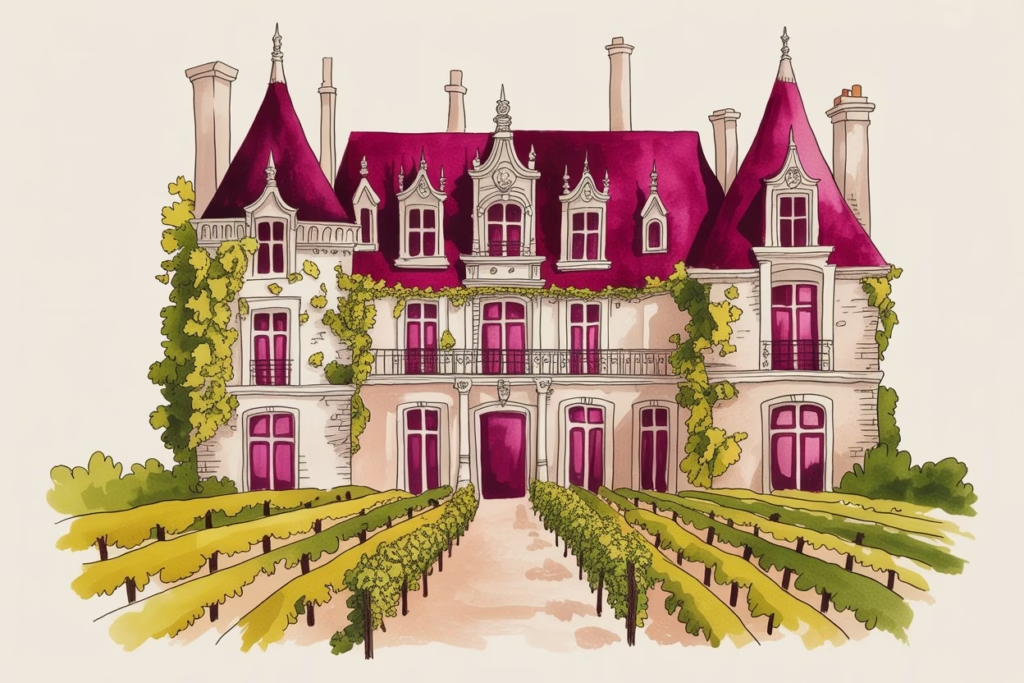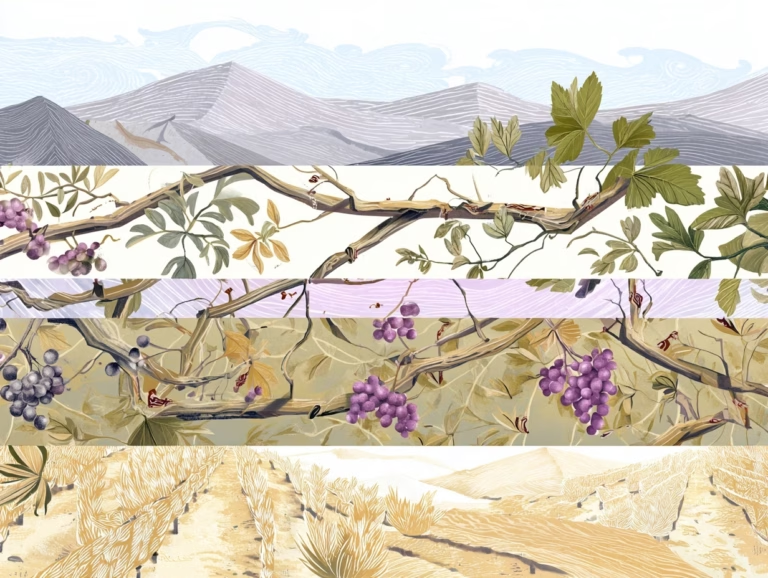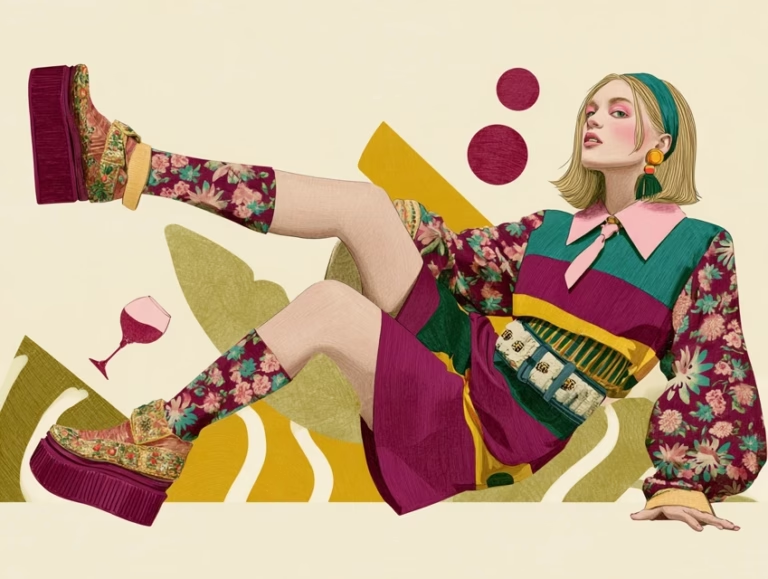Spice Up Your Life with a Bordeaux Blend: Your Ultimate Guide to Bordeaux Wine
Spoiler alert: Understanding Bordeaux wine is way easier when you think of it like the Spice Girls – and just as iconic.

If Bordeaux wine intimidates you, you’re not alone, bestie. All those fancy French châteaux names and eye-watering price tags can make choosing a bottle feel like picking an outfit for the Met Gala – overwhelming and slightly terrifying. But here’s the tea: Bordeaux wines are basically the ultimate collaboration, bringing together different grape varieties to create something magical. Think of it as the wine world’s answer to your favorite girl group – each member brings their own vibe, but together they’re unstoppable.
Ready to decode this legendary wine region? Let’s break it down without the pretentious wine speak.
Bordeaux 101: The Region That Changed the Wine Game

Bordeaux is a large winemaking region (or “région viticole”) in southwest France, near the Atlantic coast. And it’s a big one — about 120,000 hectares (or 500 square miles) of vineyards — sliced in two by the Gironde estuary and its two rivers: the Garonne and the Dordogne. This split creates the famous Left Bank and Right Bank. Left Bank wines tend to lean more Cabernet Sauvignon-forward, while Right Bank wines usually lead with Merlot.
The climate is pretty mild, with warm summers and damp winters, and the mix of gravel, limestone, and clay in the soils makes it ideal for growing grapes that can develop complexity, structure, and that earthy kind of elegance that Bordeaux does so well.
Here’s what makes Bordeaux special: The region is split by the Gironde estuary into Left Bank and Right Bank – and this isn’t just geography, it’s your wine personality test. Left Bank wines are the structured, boss-babe types (hello, Cabernet Sauvignon), while Right Bank wines are your soft-launch, approachable besties (Merlot energy).
The soils here are like a carefully curated skincare routine – gravel for drainage, limestone for structure, and clay for that moisture retention. It’s this perfect storm of terroir that creates wines with serious complexity and that je ne sais quoi elegance.
So… What’s in a Bordeaux Blend?

Here’s where it gets fun – Bordeaux isn’t actually a grape variety. Plot twist! It’s a place, and the wines are blends of up to five different grapes. Each one brings their own personality to the party, just like our favorite 90s icons:

Think of the five noble grapes like the five Spice Girls, each bringing their unique personality and style to the bottle:
🌟 Merlot = Baby Spice (Emma)
- Personality: Sweet, soft, absolutely lovable
- Flavor profile: Juicy plums, cherry pie, velvet textures
- Vibe: The friend who always knows how to make you feel better
- Where she shines: Right Bank Bordeaux (Saint-Émilion, Pomerol)
Soft, plush, and ultra-approachable. Merlot is Baby Spice (Emma Bunton) — sweet, charming, and always ready to keep things cute and cozy. She’s the heart of Right Bank blends, thriving in cooler, clay-rich soils. Merlot brings juicy red fruit (think plum, cherry, raspberry) and a smooth, velvety texture that makes everything feel easygoing and lovable.
🔥 Cabernet Sauvignon = Scary Spice (Mel B)
- Personality: Bold, intense, commands attention
- Flavor profile: Dark berries, cedar, graphite, firm tannins
- Vibe: That friend who always speaks her mind and isn’t afraid of anything
- Where she shines: Left Bank Bordeaux (Médoc, Margaux)
Bold, intense, and totally commanding. Cabernet Sauvignon is Scary Spice (Mel B) — fierce, structured, and never one to blend into the background. This grape gives Left Bank wines their backbone with firm tannins, dark cassis flavor, and serious aging potential. You’ll also catch hints of graphite, cedar, and the occasional green pepper. She’s the power player in the group.
💜 Cabernet Franc = Posh Spice (Victoria)
- Personality: Elegant, sophisticated, quietly essential
- Flavor profile: Red berries, violets, herbal notes, silky finish
- Vibe: Effortlessly chic friend who elevates every situation
- Role: The perfect supporting act that makes everyone else better
Elegant, aromatic, and just a little elusive. Cabernet Franc is Posh Spice (Victoria Beckham) — understated but essential, with a quiet sophistication. She brings lift and finesse to the blend with red berries, violets, and earthy herbs. Cabernet Franc adds a fresh, herbal complexity and softens the structure with silky tannins.
⚡ Petit Verdot = Sporty Spice (Mel C)
- Personality: High-energy, spicy, small but mighty
- Flavor profile: Deep color, floral notes, peppery kick
- Vibe: That friend who’s always up for an adventure
- Usage: Small amounts that pack a serious punch
A punch of spice and energy. Petit Verdot is Sporty Spice (Mel C) — strong, peppery, and high-impact, even in small doses. Though she only shows up occasionally, when she does, you know. This grape adds deep color, floral perfume, dark fruit, and a zippy, spicy edge that keeps things sporty).

🌶️ Malbec = Ginger Spice (Geri)
- Personality: Bold, dramatic, with retro appeal
- Flavor profile: Inky fruit, rich textures, nostalgic charm
- Vibe: The friend who left the group but we still love her
- Modern role: Less common now, but adds depth when included
Bold, fun, and a little retro. Malbec is Ginger Spice (Geri Halliwell) — maybe not front and center anymore, but she brought the drama and flair back in the day. Though it plays a smaller role in modern Bordeaux, Malbec brings plush, inky fruit and a sense of richness and nostalgia to the mix.
Together, they form the ultimate girl group. But not every blend includes all five — different Bordeaux appellations (AOCs, short for Appellation d’Origine Contrôlée) favor different combinations depending on the region’s soils, climate, and tradition.
Left Bank vs Right Bank: Your Wine Personality Test
Not sure which Bordeaux style matches your vibe? Here’s your cheat sheet:
Left Bank Bordeaux (Team Structure)
- ✨ If you’re: A planner, love bold flavors, enjoy wines that evolve
- ✨ Main grape: Cabernet Sauvignon-dominant
- ✨ Flavor: Structured, tannic, black fruits, cedar notes
- ✨ Famous areas: Médoc, Pauillac, Margaux, Saint-Julien
- ✨ Best for: Special occasions, red meat dinners, aging in your wine fridge
Right Bank Bordeaux (Team Approachable)
- ✨ If you’re: Go-with-the-flow, love smooth wines, want something for tonight
- ✨ Main grape: Merlot-dominant
- ✨ Flavor: Soft, fruity, plush textures, approachable young
- ✨ Famous areas: Saint-Émilion, Pomerol
- ✨ Best for: Weeknight dinners, cheese boards, wine newbie friends
If you’re still struggling to choose, here’s a Bordeaux cheat sheet to help decide whether the left or right bank is right for you.
| Left Bank | Right Bank | |
| Primary Grapes | Cab Sauv dominant (blended with Merlot, Cab Franc & Petit Verdot) | Merlot Dominant (blended with Cab Franc and some Cab Sauv) |
| Style | Structured & Tanic | Plush, Softer, Fruit-Forward |
| Soil Type | Gravel with some Clay & Limestone | Clay & Gravel |
| Climate / Terroir | Warmer, with High-Drainage Soil | Cooler, with Moisture-Retaining Soils |
| Signature AOCs | Médoc (e.g., Pauillac, Margaux), Graves | Saint-Émilion, Pomerol |
| Aging Potential | Very high (often needs time) | High (but often approachable earlier) |
How to Shop for Bordeaux Like a Pro
Budget-friendly tips:
- Look for “Bordeaux” or “Bordeaux Supérieur” labels (these are the entry-level options)
- Try Côtes de Bordeaux wines for great value
- Skip the famous château names for everyday drinking
What to pair it with:
- Left Bank: Steak, lamb, aged cheeses, dark chocolate
- Right Bank: Roast chicken, mushroom dishes, pasta with red sauce, brie
Storage game:
- Most Bordeaux can age 5-15+ years
- Store on side in cool, dark place
- Younger wines (under 5 years) are often ready to drink now
The Bottom Line: Why Bordeaux Belongs in Your Wine Rotation
Bordeaux wines are like that friend group that’s been together forever – they just work. The grapes complement each other perfectly, creating wines that are way more interesting than any single variety could be alone. Plus, with so many different styles and price points, there’s literally a Bordeaux for every mood, meal, and budget.
Ready to start your Bordeaux journey? Grab a bottle from Saint-Émilion if you want something smooth and approachable, or try a Médoc if you’re feeling adventurous and want something with more structure. Either way, you’re about to understand why this region has been the gold standard for red wine blends for centuries.
Quick Reference: Bordeaux Wine Terms to Know
- Vintage: The year the grapes were harvested (matters more for premium bottles)
- AOC/AOP: Official French wine regions (like a wine’s birth certificate)
- Château: The winery/estate name (not always an actual castle, sadly)
- Terroir: The complete environment where grapes grow (soil + climate + magic)
- Tannins: What makes wine feel dry in your mouth (think strong black tea)
Which Spice Girl grape speaks to your soul? Are you Team Left Bank or Team Right Bank? Drop a comment and let’s chat about your Bordeaux personality!
Disclaimer: While I’d love a Spice Girls endorsement, this is a fan-made comparison for entertainment and educational purposes only. All mentions of the Spice Girls, including references to their likeness, music, or branding, are intended as commentary and are not affiliated with or endorsed by the Spice Girls, their management, or associated copyright holders. Album artwork and imagery, if included, are used under the relevant embedding licenses and/or fair use for the purpose of commentary and cultural discussion.



